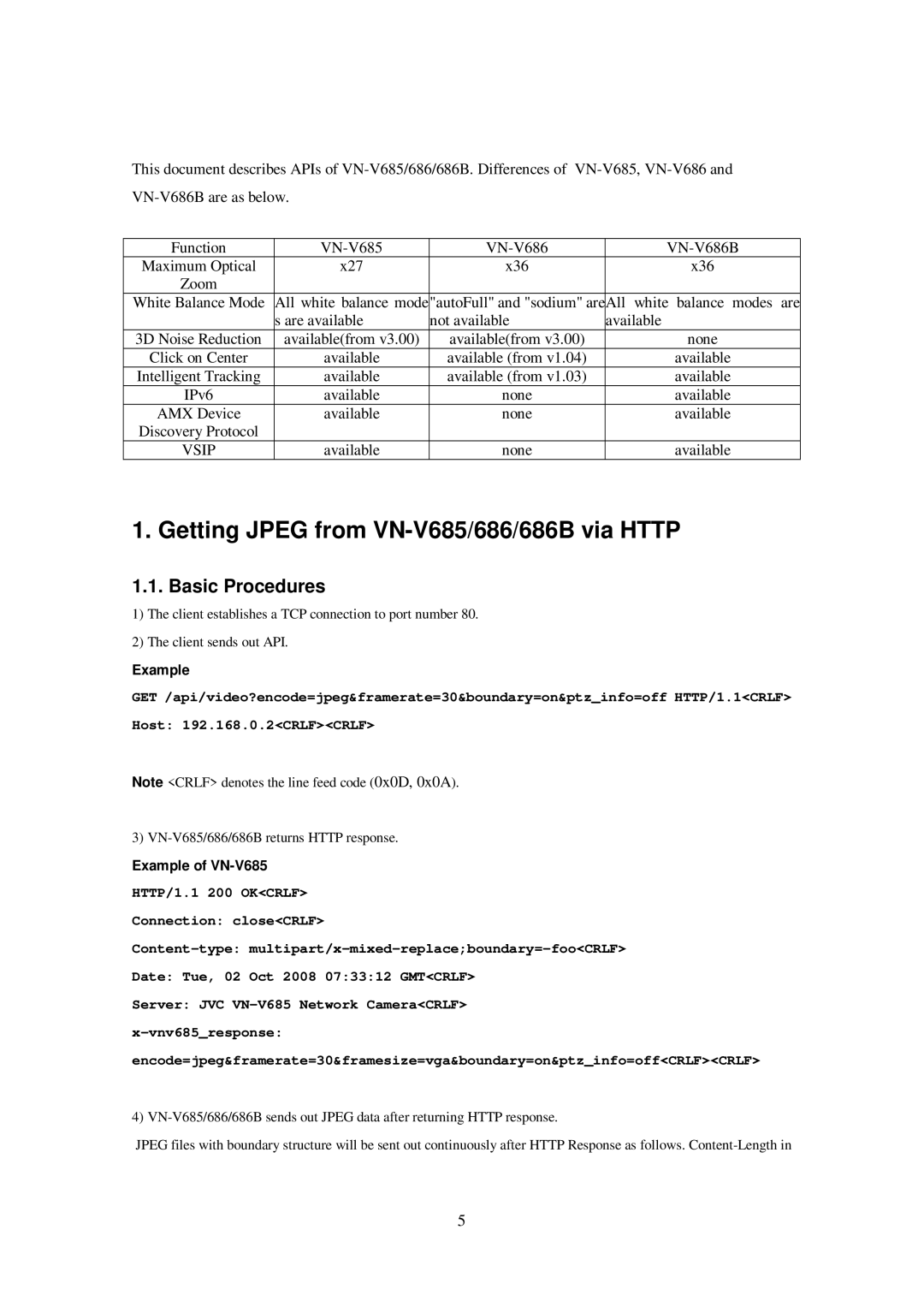
This document describes APIs of
Function | |||
Maximum Optical | x27 | x36 | x36 |
Zoom |
|
|
|
White Balance Mode | All white balance mode"autoFull" and "sodium" areAll white balance modes are | ||
| s are available | not available | available |
3D Noise Reduction | available(from v3.00) | available(from v3.00) | none |
Click on Center | available | available (from v1.04) | available |
Intelligent Tracking | available | available (from v1.03) | available |
IPv6 | available | none | available |
AMX Device | available | none | available |
Discovery Protocol |
|
|
|
VSIP | available | none | available |
1. Getting JPEG from VN-V685/686/686B via HTTP
1.1. Basic Procedures
1)The client establishes a TCP connection to port number 80.
2)The client sends out API.
Example
GET /api/video?encode=jpeg&framerate=30&boundary=on&ptz_info=off HTTP/1.1<CRLF>
Host: 192.168.0.2<CRLF><CRLF>
Note <CRLF> denotes the line feed code (0x0D, 0x0A).
3)
Example of
HTTP/1.1 200 OK<CRLF>
Connection: close<CRLF>
Date: Tue, 02 Oct 2008 07:33:12 GMT<CRLF>
Server: JVC
4)
JPEG files with boundary structure will be sent out continuously after HTTP Response as follows.
5
